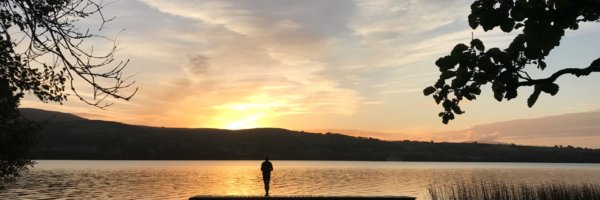Casting aside stereotypes of famine and arid dustbowls, Kris Goodbody heads to Ethiopia and discovers a proud land boasting ancient history and stunning mountains.
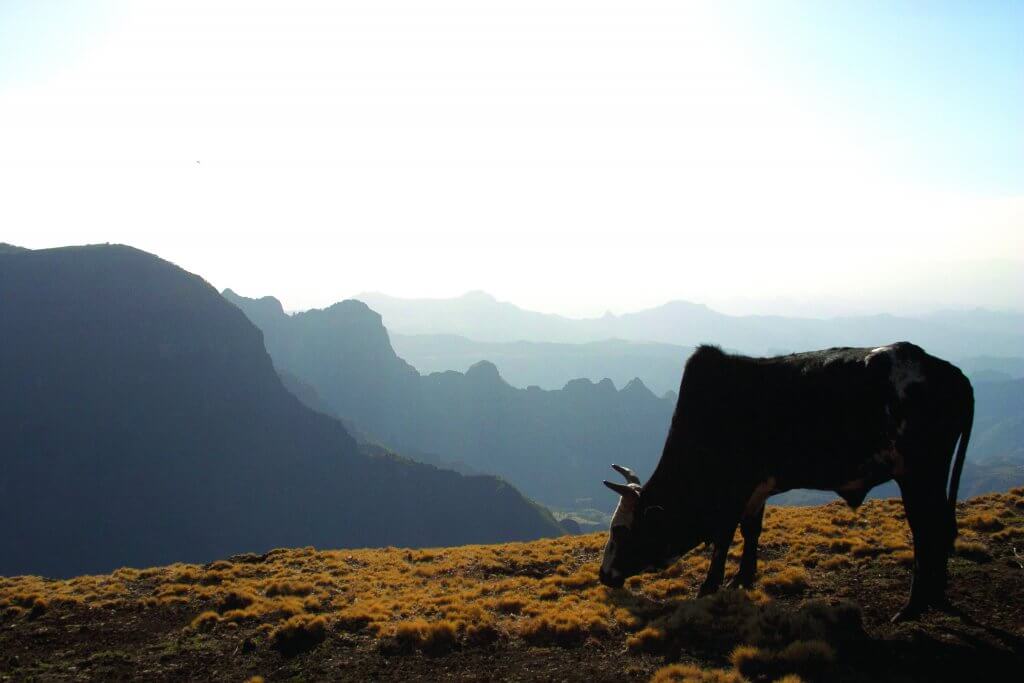
Ethiopia is a misunderstood place. The all-too fleeting thoughts that we cast south to this country tend to involve arid fields, starving children, Live Aid and handouts. Granted, the latter half of the 20th century wasn’t kind to Ethiopia. The tragedies that came with the Communist coup in 1974 led to the harrowing images of famine and drought that flickered on Western screens in the 1980s. What these comparatively recent developments overshadow, though, is a country that has arguably the richest history and most diverse natural wonders of any in Africa.
The Land of a Thousand Hills: Walking Rwanda
Ethiopia is claimed to be the birthplace of humanity and Africa’s cradle of Christianity. It’s the only country in Africa not to be colonised by a foreign power – it’s a country of kings and emperors, thousand-year-old churches and ancient walled citadels teetering on hilltops. It is also a place not yet ravaged by tourism, and now is the time to go.
The northeast of Ethiopia is home to the country’s highest concentration of both manmade and natural wonders. It is here that you’ll find the roof of Ethiopia – the Simien Mountains and the eponymously named national park. Lush green peaks towering 5,000m into the sky dotted with walia ibex, Ethiopian wolves and the most famous inhabitants, the long haired gelada baboon, a bizarre and beautiful monkey found only in these wind-battered Ethiopian highlands, which are a World Heritage Site.
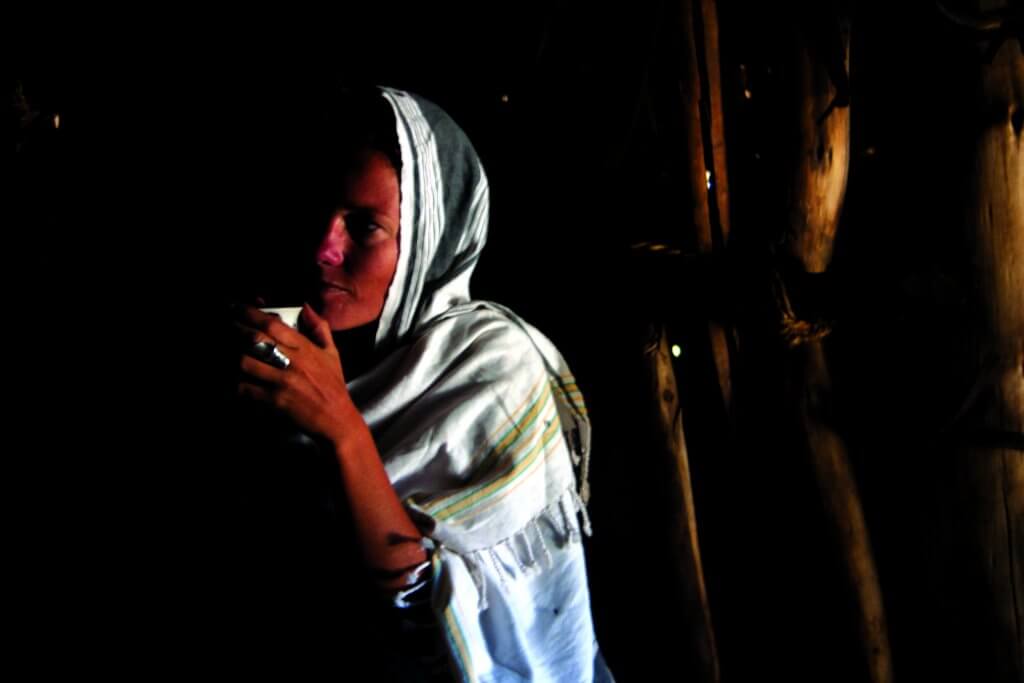
Faranjis on tour
It was in this otherworldly national park that I spent five days trekking with five friends, a collection of faranjis (the local Amharic word for any foreigner – to be heard 20 times a day every day while in the country) hailing from a range of countries from Kenya to Finland. The goal was a four-day 60km trek through an unforgiving landscape situated at an altitude that provides a bird’s eye view of most clouds. For a group largely consisting of beach dwellers, be it the coastline of southern Kenya or the Irish Riviera, the lofty nature of the hike and the thin air that came with it was the cause of a few sideways glances at the outset.
The city of Gondar is the gateway to the Semiens, though it does have a handful of other charms, most notably King Fasilides’ castle dating back to the 17th century. In order to get there we could have taken a bus that staggers through the 14-hour trip from the capital, Addis Ababa, or there is a 45-minute flight. We decided to fly.

In Gondar we were met by our guide Meles who shares his name with Ethiopia’s late ex-president. On meeting him we were treated to a well-practiced joke regarding his designs on becoming the next one. He was met with a receptive crowd who were still feeling jovial after lunch at the provocatively misspelled’Semen Restaurant’. In a fine mood we set off to take our first look at this mountain range that had dragged us from halfway across the world.
With our cutting-edge boots strapped tight and Camelbacks filled to the brim we looked every bit the part as we struggled to keep up with Meles in his plastic slip on shoes and bag made out of old rice sacks.
“It’s a bit like the Grand Canyon but a bit more… Ethiopian.” This was met with approving grunts from the group as we gazed out over a precipice plunging many hundreds of meters into a green valley, dotted here and there with a patchwork of huts and farmland. With our cutting-edge boots strapped tight and Camelbacks filled to the brim we looked every bit the part as we struggled to keep up with Meles in his plastic slip on shoes and bag made out of old rice sacks. This first evening we were out for a leisurely 10km hike into the setting sun. The air was warm and pure; the view shimmering but crystal clear.
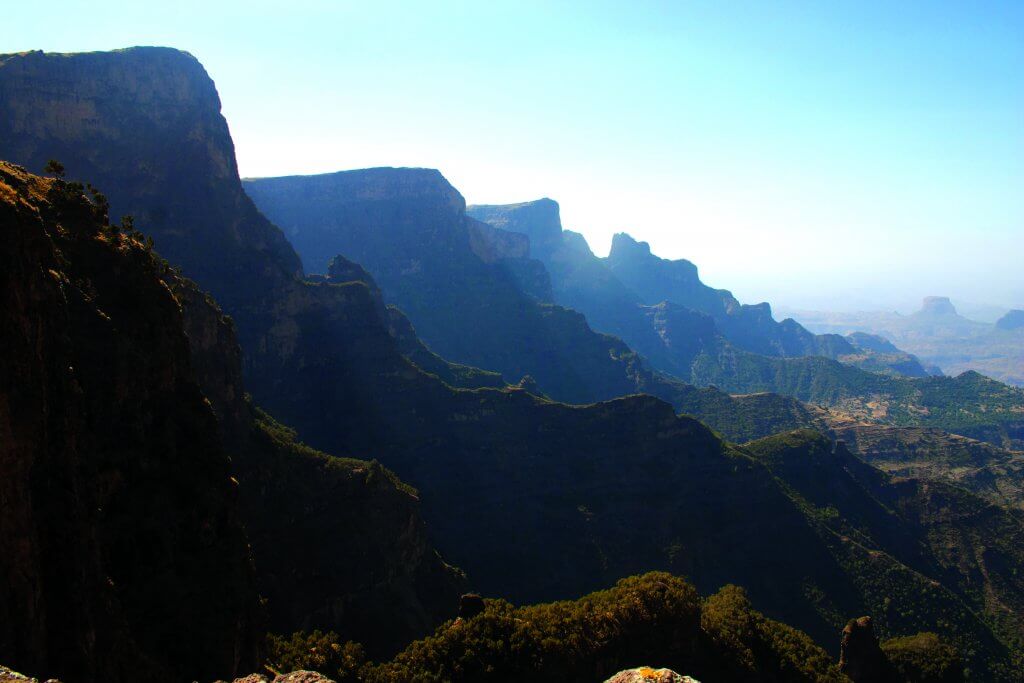
Finding our rhythm
A misconception that I have stubbornly held on to most of my life is that Sub-Saharan Africa is, without fail, a very warm place – though I have recently altered my stance on this point. Most ski resorts in Europe lie in and around the 2,000m mark; our first night in the Simiens we spent at 3,500m and it was very cold indeed. We huddled two to a tent for warmth, the temperatures plunged below zero and a cruel wind raced down from the tall peaks surrounding us. Within reason most of us came prepared. Thick socks and thermal underwear were worn to bed though every one of us, especially my grossly unprepared self, felt the cold in their bones that night.
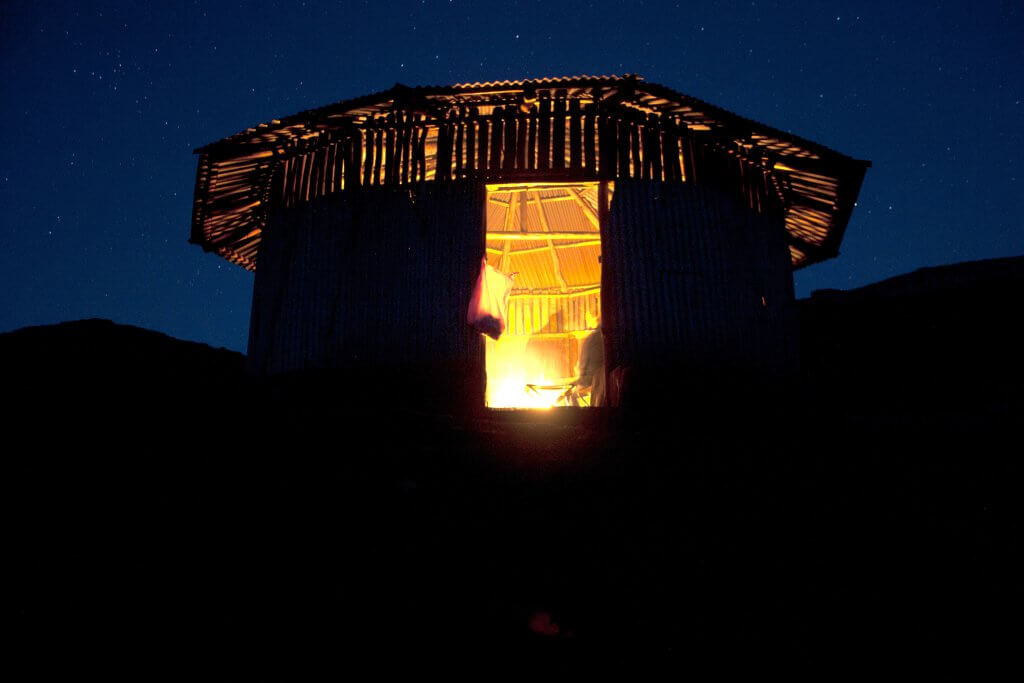
Hiking alone in the Simiens is not an option. In fact, on our hike we had something of a hoard of locals looking after us. We had Meles our guide, a scout with a gun lest we run into anything wild we couldn’t handle, a cook and his assistant, along with a revolving door of general helpers to cater to our Western needs.
There is something of the lion about the great males. Their long thick hair juts out from their heads at savage angles, while their powerful muscles and purposeful stride give them a regal air.
It was the cook who saved us in the morning. We staggered out of bed at 7 am, most of us with sleeping bags still draped over us gazing through deep-set eyes of bewildered suffering. A camp table was set up and coffee laid out, thick porridge sat in bowls with bread and honey on the side. Before we knew it our stomachs were full and the sun brought the heat with it at an alarming rate. Excitement replaced bewilderment as we thawed out, reached for our kit and set off to meet the day.
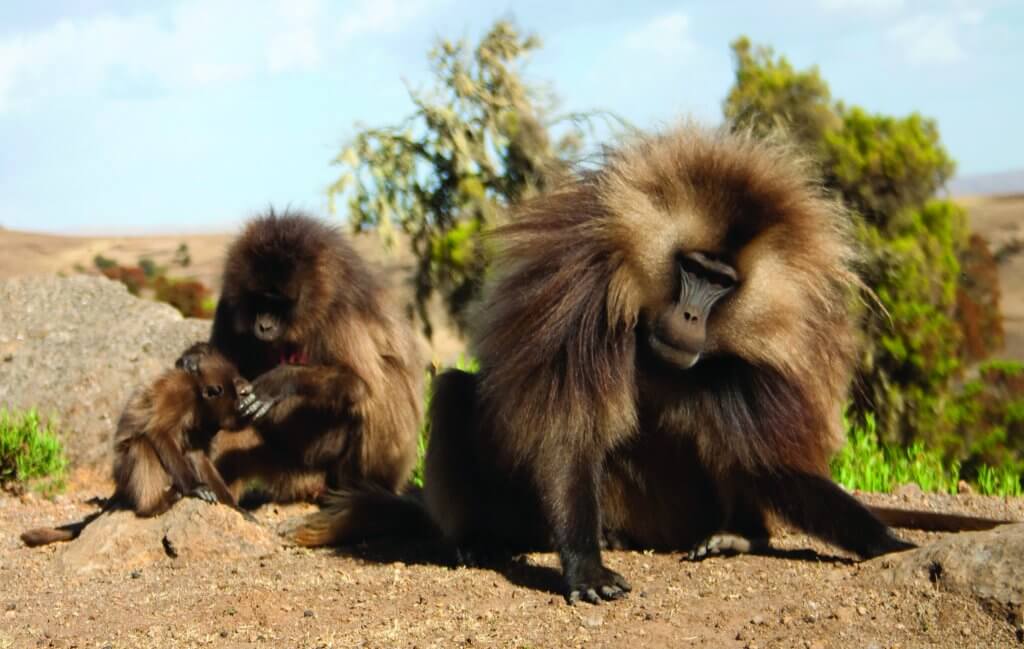
The Simiens are a wild and beautiful place. Almost immediately after setting out on our hike we ran into a troop of gelada baboons, dozens of them. There is something of the lion about the great males. Their long thick hair juts out from their heads at savage angles, while their powerful muscles and purposeful stride give them a regal air. We had these creatures swarming around us in great numbers, coming almost close enough to touch and eyeing us curiously. I had premonitions of our encounters with them being like those of a safari, fleeting and distant, but here we were right in the midst of the family.
Once we found our rhythm, the days rolled by, swift and happy. A day’s walking averaged around eight hours and most of these were spent climbing ever higher into the thinning air. This we knew thanks to determined half-hourly updates from a man who was very proud of his watch-cum-altimeter. The pace we set was good and every evening we arrived in camp before dark to a waiting cup of tea and the option of a cold shower. Sometimes there were a few beers to be bought at extortionate prices and there was always a sunset to distract us. Dinner was served by our ever-smiling chef in a kind of a Mongolian yurt, then coffee and jokes were shared around a fire. Bedtime was at 9 pm.
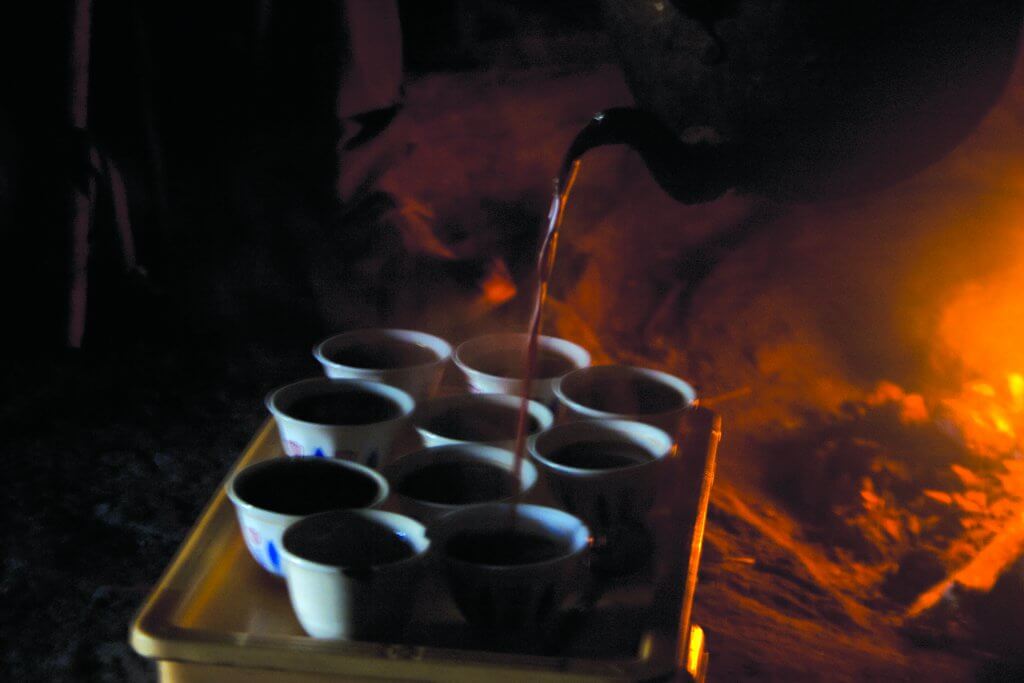
A place of contrasts
The travel writer Paul Theroux described the Ethiopians as “A handsome people in rags… a race of aristocrats who pawned the family silver.” This is something that resonated upon meeting those who make these mountains their home. Lean, tall people with high cheekbones, white teeth and a tranquil, smiling disposition. Though these are often the same people who had sunken eyes and a chalky pallor that betrays some kind of illness, or the kids who would beg for anything – from money to a throwaway plastic bottle.
A working man here could earn roughly 6 birr (25 cent) per day for hard manual labour, while mountain guides routinely get tipped thirty times this for bringing faranjis on a four-day stroll in the hills.
These people live in an isolated world in a society that is almost solely reliant on agriculture to earn a living. A working man here could earn roughly 6 birr (25 cent) per day for hard manual labour, while mountain guides routinely get tipped thirty times this for bringing faranjis on a four-day stroll in the hills. No wonder this tourism-inspired change is being welcomed with open arms by the local people. In a recent frenzy of development gravel roads have been carved out of cliff edges and lined with electricity pylons, a change that prompted one of our group to stare wistfully into the distance and whisper “Is there any true wilderness left?”
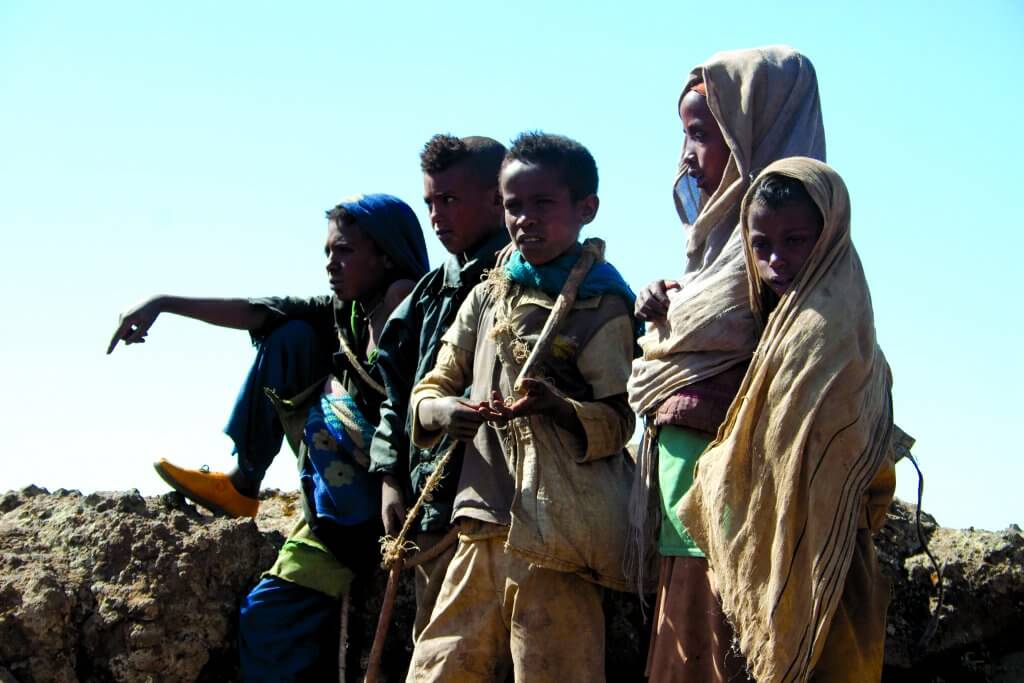
After four days hiking through the Ethiopian wilderness – fording rivers, scrambling down impossible inclines, sleeping in wind-battered campsites without electricity or running water – it was a bit of a shock to turn a corner and be confronted with a little slice of civilisation. In a way these roads and pylons took the wind out of our sails a little, a blow to the intrepid pride we’d contrived for ourselves. Though when exhaustion took over on the descent from our 4,000m finish line there wasn’t one of us who wasn’t glad to see a minibus waiting to whisk us back to reality. This same road that relieved us of the discomfort of several miles of hiking is the only lifeline for the thousands of people living in this remote corner of Ethiopia, and for this I believe we were able to forgive it for spoiling our view.
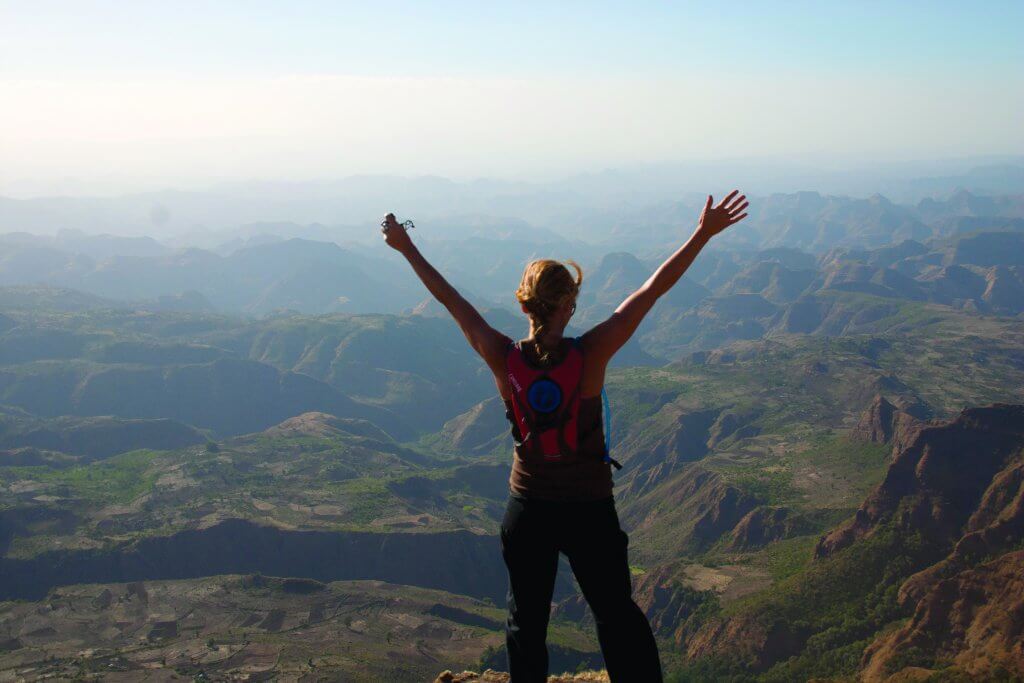
Planning a trek in the Simien mountains: the low down
- Getting there: The best way to get to the Simiens is to hop on a 45-minute flight from Addis Ababa to Gondar. Once there, it’s only an hour-and-a-half drive to the foothills of the mountains.
- Trekking: When planning a trek in the Simien Mountains it best to organise it all through a tour operator. You’ll easily find these in Gondar as they are well advertised. My advice would be to shop around and don’t be afraid to haggle shamelessly. Also be sure to factor in the mandatory tips for your guides at the end.
- The mountains themselves: Ras Dashen, the highest point in the Simien Mountains at 4550m is the 10th highest mountain in Africa and is only a mere 300m short of Europe’s perpetually snow-capped Mont Blanc.
- Wildlife: The long-maned gelada baboons are only found in the Ethiopian highlands. They’re mostly concentrated in the Simien Mountains. The name incidentally has nothing to do with the resident monkey population. It simply means ‘north’ in the local dialect.
- Food and accommodation: Ethiopia is currently one of the cheapest countries in the world to travel in. In the right restaurant, a meal of injera and lentils, a remarkably filling and tasty local vegetarian dish, could run you about 10 birr, the equivalent of 35 cent, while a reasonable hotel room sometimes goes for a mere €4-€5.
The word faranji basically means foreigner in Amharic, a word you’ll soon become overly familiar with after a few days in Ethiopia as every man woman and child in the country feels the need to yell it at you on sight.
The Simien Mountains appeared in the recent BBC/David Attenborough documentary ‘Africa’ in which they are hailed as one of the most breathtaking places in the whole continent.
Words and photos: Kris Goodbody
Check out our Hard as Nails podcast:
Why not also take a look at:


